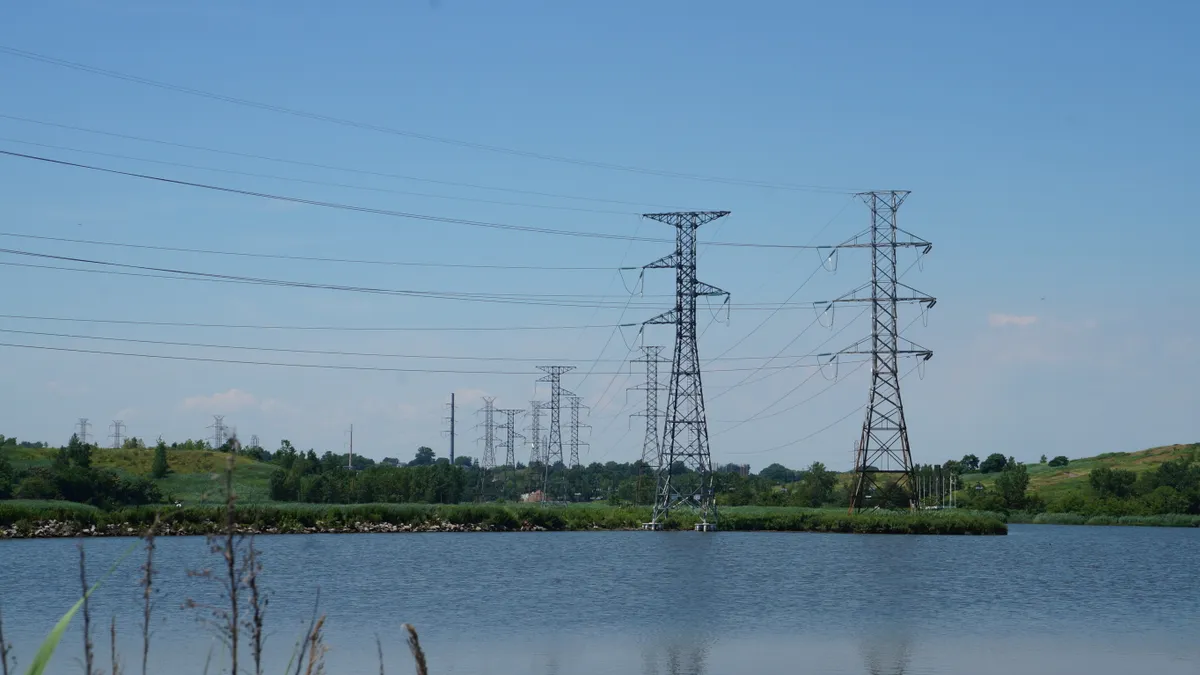Federal and state utility regulators on Tuesday considered options for beefing up oversight of a growing number of transmission projects falling into a regulatory gap, including by establishing independent transmission monitors, or ITMs.
Increasingly, utilities are developing local projects that may receive little scrutiny at the state or federal level, according to comments at the fifth meeting of the Federal Energy Regulatory Commission and National Association of Regulatory Utility Commissioners transmission task force in New Orleans.
Nearly two-thirds of transmission spending in the California Independent System Operator footprint are on repair and replacement projects that aren’t reviewed by the grid operator, the California Public Utilities Commission or FERC, according to Darcie Houck, California PUC commissioner.
In the last three years, 63% of the transmission investment by the state’s investor-owned utilities has been on “self-approved” projects, she said. Pacific Gas & Electric, for example, has proposed spending $13.1 billion on transmission projects over five years starting in 2022, with 84% of the expenditures falling outside of any review, she said.
In Pennsylvania, full reviews are only conducted for greenfield transmission projects larger than 100-kV, Gladys Brown Dutrieuille, Pennsylvania Public Utilities Commission chairman, said. The PUC is seeing a “big increase” in projects that only require a utility to file a report or letter of notice to be built, she said, without providing exact numbers.
Overall utility transmission rate base increased more than 9% last year and has almost tripled in the last decade, according to FERC Commissioner Mark Christie.
“What goes into rate base goes into consumers’ bills,” Christie said. “This is big, big money.”
Finding an efficient way to bolster cost management can be a useful addition to transmission oversight, according to FERC Commissioner Allison Clements. “I don’t think any of us are interested in stymieing or slowing down needed transmission development,” she said.
One option is to create ITMs.
The California PUC recommends that FERC require regional transmission organizations and ISOs to establish ITMs to provide an assessment of transmission needs, their costs and alternatives to them, according to Houck. An ITM’s mandate could be determined by the region or state where it operates, she said.
ITMs may not be needed for regional transmission projects, which typically are thoroughly vetted, according to Andrew French, a Kansas Corporation Commission commissioner.
However, they could help address the regulatory gap with local transmission planning, he said.
Local transmission development is needed, but when paired with favorable ratemaking treatment, there is “a flood of capital investment in that area and that just screams out for more oversight,” he said.
One state regulator questioned the need for ITMs.
Tricia Pridemore, Georgia Public Service Commission chairman, said a top-down government structure will delay renewable energy development, increase costs and reduce state regulatory authority.
FERC Commissioner James Danly said he has found significant opposition to ITMs.
“An alternative, I think, to having a transmission monitor is for the state and federal commissions to do what they can to robustly engage in their job of ratemaking,” Danly said.
An ITM pushes FERC further away from its responsibility to make sure rates are just and reasonable, he said.
FERC’s formula rate process is another area that could be reformed to increase transmission oversight, according to comments at the meeting.
Using its formula rate process, FERC establishes an initial formula that includes inputs, such as rate of return, to determine the transmission owner’s rates. The inputs are then updated annually. The process avoids rate cases where the prudence of expenditures can be challenged. The annual filings are reviewed by FERC staff, but the burden is on outside parties to show those rates may not be just and reasonable.
Christie offered a proposal to ensure that transmission projects with formula rates are adequately reviewed.
Under the proposal, a state would have to certify they have a robust review process for transmission projects before FERC would let projects from that state receive formula rates.
Formula rates are subject to less scrutiny, have no regulatory lag and offer a higher return on equity compared to the rates that emerge from rate cases, according to French. As a result, utilities value their potential investments differently, leading them to invest in local projects that can be covered by formula rates, he said.
It also incentivizes utilities to rebuild aging infrastructure without considering bigger, better-optimized alternative transmission projects that would require more scrutiny, he said.
FERC should consider creating a board with state regulators to harmonize various ratemaking treatments so different types of transmission projects have the same investment potential, French said.























